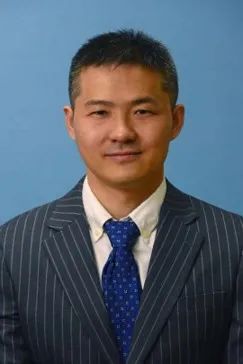How should EGFR mutations combined with the primary MET amplification NSCLC patients?The dual -target solution takes effect quickly and lasting
Author:Cancer Channel of the Medical Time:2022.09.10
*For medical professionals for reading reference

Cevotinib+Oshitinib the treatment of EGFR mutations merged with primary MET amplification patients to achieve rapid and lasting relief, while safety is good!
The patient was a 68 -year -old female non -small cell lung cancer (NSCLC) patient, and the first diagnosis was EGFR L858R positive (EGFR L858R+) merged MET amplification. After the patient receives the first cycle of Bevarzumab+Ekntinib (A+T), the curative effect is evaluated as the progress of the disease (PD); then the patient is given the Barvar Mipido combined with the paclitaxel lipid body+card platinum A targeted combined chemotherapy scheme, about 1 month, the patient's tumor shrinks, and the curative effect is evaluated as the stability of the disease (SD). After the month, patients quickly realized (PR), and at the same time had good safety. By the time the last curative effect was evaluated, the patient had achieved PR for more than 8 months, and it was still in continuous benefits. The case was provided by Professor Jiang Zhan Sheng of Tianjin Cancer Hospital, and invited Professor Pan Zhanyu of Tianjin Cancer Hospital to comment.
Profile
Patient information: female, 68 years old.
Previous history: High blood pressure for more than 10 years, self -taking drugs can be controlled.
Biochemical blood test: Blood routine and liver and kidney function are obviously abnormal.
Tumor marks: SCC = 0.7 ug/L; progrp = 24.42 ng/L; nSE = 37.70 ug/L; CA19-9 = 437.30 U/ml; CEA = 3.19 ug/L; CYFRA21-1 = 18.5 ug/L.
Pathological: On August 30, 2021, the lymph nodes spiny biopsy under ultrasonic guidance, the pathological return is (puncture biopsy on the right lock) malignant tumor, considering low differentiation cancer, combined with immunohistochemistry considering lung adenocarcinoma.
Imaging examination: PET-CT (September 28, 2021) shows, 1. 1. The left lung leaf tongue section nodules, a larger section of about 2.3cm × 1.9cm, SUVMAX15.2, considering it as peripheral lung cancer; 2. The left and lower neck and bilateral lock areas, upper hypertrophy gaps, intervals of the two -headed vein, peripheral vein, surrounding the cavity, aortic arches, main lung windows, surroundings of the main lungs, surroundings of strange food nests, surrounding esophageal, biper pulmonary arteries, double horny, double pulmonary artery, double horny, and double horn, There are more nodules in front of the upper esophageal and abdominal aorta, and the big one is about 2.6cm × 2.1cm, SUVMAX16.5, consider transfer; 3. Double lungs are sampled and millet shadow, consider the possibility of transfer; 4. The left pleura is thickened and considered to be metastasized; Consider transfer.
组织二代测序(NGS)基因检测:EGFR L858R突变,丰度:28.93%;MET扩增:CN:4.5;TP53 10号外显子错义突变,丰度:30.59%;TMB 11.96mub/Mb;MSS ; PD-L1: TPS 90%; CPS: 90.
Preliminary diagnosis: left lung cancer, multiple lymph nodes, left pleural and bone metastases, except for metastases of bioconent and adrenal glands; adenocarcinoma; T4N3M1C, IVB stage; EGFR L858R mutation combined with TP53 mutations, meta amplification; PD-L1: 90% TPS 90% , CPS 90; ECOG score: 1 point.

Provide experts
Professor Jiang Zhan: EGFR mutation combined with the original MET expansion cannot be ignored. Dual targets are important therapeutic strategies
Related studies have shown that in addition to EGFR -driven gene mutations, at least one known or possible gene mutation in patients with advanced NSCLC in the later period of & 90%[1]. EGFR mutation combined with the original MET amplification/over -expression is an important mutant subtype of NSCLC patients that cannot be ignored [1]. Some data show that the primary MET gene amplifier accounts for 1%~ 6%of NSCLC [2] Essence
Although the research data of the current MET amplification combined with EGFR mutations is relatively small, with the continuous development of targeted therapy, the dual-target scheme of EGFR-TKI combined with MET inhibitors has gradually entered the clinical attention, providing a new direction for clinical treatment. There were previous cases reports [3] confirmed the treatment potential of EGFR-TKI combined with MET-TKI in such patients. This case report shows that a 63-year-old phase IV and EGFR L858R mutations merged MET amplified Chinese male NSCLC patients, the non-progressive survival (PFS) of the front-line chemotherapy is 7.17 months, and the EGFR-TKI treatment is only 4 after the chemotherapy progresses After the week, primary resistance appeared. Subsequently, the patient received the EGFR-TKI combined with MET-TKI treatment. After 1 month, the right lung lesion was reduced by 73%. After 8 weeks, the right lung lesion almost disappeared. The patient's PFS was 16.8 months and no adverse events had occurred.
At the same time, MET-TKI combined with EGFR-TKI in the EGFR+merged MET amplification NSCLC patients has also been verified in related clinical studies. A multi-centered, random control, open-label stage II Study [4] evaluated the efficacy of MET-TKI+Ellotinib to treat EGFR mutations positive NSCLC in the treatment of EGFR mutations. Met high expression (defined as IHC 3+ in 90%tumor cells) can achieve PFS benefits from MET-TKI combined with Elotininini treatment (20.7 vs. 5.4 months, HR = 0.39). In this case, the patient was accompanied by the EGFR L858R mutation and MET amplification mutation at the first diagnosis. He took the lead in accepting the Bevarzumab combined with EGFR-TKI or chemotherapy. The efficacy was limited and chemotherapy was poor. After the patient replaced the Oshitininib combined the treatment of Teldininib, PR quickly achieved PR in just one month. The PR continued for 8 months, and the safety was good. It is still in the continuous benefit. Therefore, the case prompts that for the NSCLC patients with the EGFR L858R mutation merged MET expansion mutation during the first diagnosis, Savidinininininie's MET-TKI+EGFR-TKI dual target scheme can be used as preferred treatment solutions.
Expert Reviews
Professor Pan Zhanyu: Savotinib for the treatment of EGFR L858R mutations and combined with primary Met amplification patients to achieve rapid and long -lasting PR.
As a high -selective MET inhibitor, Savacinib provides a preferred treatment for patients with MET amplification NSCLC. The 68 -year -old female NSCLC patient was diagnosed with EGFR L858R mutations and measuring MET expansion at first diagnosis, but the first line A+T treatment was not good and PD soon occurred; A shrinking SD, but patients are not tolerated by chemotherapy, so they need to be more efficient and safe treatment.
Surprisingly, the patient's replacement of Savininib+Oshitinib dual -target scheme was only one month after one month, and he quickly realized PR. At the time of the recent follow -up, the PR has been maintained for 8 months and has good safety. At present, the patient is still continuing to be treated.
Although the current MET-TKI combined with EGFR-TKI is used for EGFR mutations merger and the original MET amplification, it has shown a benefit trend, but it is mainly a case report, a small sample research, and retrospective analysis. Lack of large-scale forward-looking studies have confirmed. At present, the clinical study of Saverninib for the combined EGFR mutation combined with the primary MET amplification NSCLC patients is actively developing. Among them, Flowers Studies [5] is a preliminary and preliminary study of Osteini single medicine or combined Savidinib to treat EGFR mutation positive merging. Random, double blindness, and multi -center phase III study aims to evaluate Savidinib and Oshitininib comparison and placeibly plane combined with Oshitinini to treat EGFR mutations/met+late NSCLC.
It is believed that with the continuous development of clinical research and the announcement of related research results, Savidib+Oshitinib will be expected to bring greater clinical benefits for the merger of EGFR mutations and the primary MET amplification NSCLC. Essence
Introduction to case review experts
Professor Pan Zhanyu

Tianjin Medical University Cancer Hospital, Traditional Chinese and Western Medicine Integrated Department, Chief Physician, Master Student Tutor
Standing Committee Member of the China Anti -Cancer Association Cancer Rehabilitation and Passing Treatment Professional Committee
Standing Committee Member of the Traditional Medical Professional Committee of China Anti -Cancer Association
Executive Member of the Professional Committee of Cancer Drug Research of China Chinese Medicine Association
Executive Member of the Professional Committee of the Chinese and Western Medicine Integrated Medicine Branch of the Chinese Medical Association
Chairman of the Tianjin Anti -Cancer Association Traditional Chinese and Western Medicine Integrated Tumor Treatment Professional Committee
Deputy Chairman of the Tianjin Anti -Cancer Association Cancer Rehabilitation and Passing Treatment Professional Committee
Deputy Chairman of Tianjin Traditional Chinese and Western Medicine Integrated Tumor Diseases Committee
Standing Committee Member of the Tianjin Anti -Cancer Association breast, lung, and urology committee
Expert Introduction
Jiang Zhanjian

Integrated Department
Doctor of Medicine, Deputy Chief Physician, Master's Tutor
National Natural Science Foundation review expert
"Cancer" editorial board
"Thoracic Cancer" review expert
"China Oncology Biological Treatment Magazine" review expert
"China Oncology Clinical" review expert
"China Lung Cancer Magazine" review expert
Standing Committee Member of the China Human Health Technology Promotion Association of Tumor Excience and Precision Medical Committee
Standing Committee Member of the Tianjin Anti -Cancer Association Traditional Chinese and Western Medicine Integrated Tumor Treatment Professional Committee
Standing Committee Member of the Tianjin Medical and Health Society of Cancer Professional Committee
references:
[1]. Blakely cm, et el. Nat genet. 2017 DEC; 49 (12): 1693-1704
[2]. Cui Jiudi, wait. Evidence-based medicine .2020; 20 (5): 272-276.
[3]. Zheng x, et al. LUNG CANCER. 2019 mar; 129: 72-74.
[4]. Scagliotti g, et al. J thorac oncol. 2020 jan; 15 (1): 80-90. [5]. Https://clinicaltrics.gov
*This article is only used to provide scientific information to medical people, and does not represent the viewpoint of this platform


- END -
[Tongxin Anti -Epidemia] The Student Work Office organizes all kinds of work to do good service services

At the beginning of the new semester, the emergence of new crown pneumonia has dis...
Beijing: Four returned personnel infection trajectory involved multiple trains and flights

Today (15th), Beijing held the 386th press conference of the New Crown Pneumonia E...